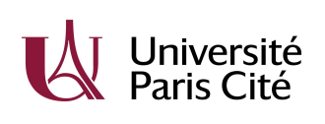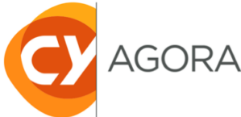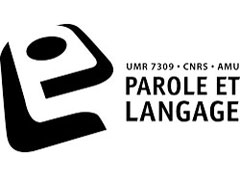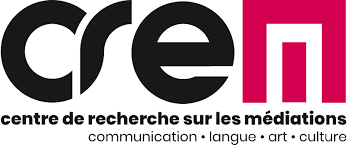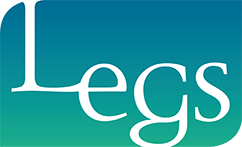Diverses Approaches to Hate Speech:
Debates, Challenges, and Controversies
18, 19, 20 May 2022, U. of Paris
Hate is a strong feeling fueled by negative emotions, such as anger, shame, contempt, and disgust. It expresses essentially the subject’s willingness to crush the Other, who is the object of hate, either physically or symbolically. Sometimes, the outcome of such hate can be a self-destructing terrorist act. When hate becomes part of discourse (Lorenzi Bailly and Moïse 2021), it constitutes a salient form of social tension between groups, ideologies, representations, and practices. It is also a salient form of processes of social domination and discrimination, and its most systematic forms are targeted at minority groups.
Hate speech is studied within various fields of the Humanities. For example, linguistics is interested in the different expressions of hate in society (Petrilli 2020) and social media (Ferrini and Paris 2019, Stassin 2019). Some studies focus on the discourse of hate speech (Baider, Millar, and Assimakopoulos 2019) or on the performativity of hate speech and its political dimension (Butler 1997, Lorenzi Bailly, Määttä, and Romain 2021). The social consequences of hate speech and their links with group relations, ideology, and the context of the speech act are also being examined. In other studies, the specific goal is to define the characteristics of “direct hate speech” (Lorenzi Bailly and Moïse 2021) or “indirect hate speech” (Baider and Constantinou 2019). In this context, neurosciences can make a major contribution by defining the cognitive mechanisms of hate. Thus, the expression of emotions and affect draws on mirror neurons (Rizzolatti and Sinigaglia 2008), including hate and empathy, especially through the production of oxytocin (Seltzer, Ziegler, and Pollak 2012). In addition, the analyses of neuronal dynamics may explain synchronous imitative interactions (Dumas 2011). There is also a plethora of studies focusing on the role of the limbic system in both positive and negative emotions. In legal studies and legal philosophy, the concept of hate speech is approached through the lens of the strained relations between hate speech and freedom of expression (Hare and Weinstein 2009). While this freedom is one of the foundations of democracy, its status and boundaries vary depending on the jurisdictional tradition (Zoller 2008). Several studies have focused on the fuzzy boundaries between hate speech and expressive speech acts such as insult or blasphemy as part of a democratic debate. There are also analyses emphasizing the role of legislation in regulating such debates (Girard 2014) and the responsibility of jurisprudence for the increase of hate crimes when hate speech is not prohibited (Ross 1995), or the legal responsibility of preserving the “social dignity” of certain groups (Waldron 2012). At the same time, from a historical perspective, hate speech corresponds to specific socio-political contexts that fuel and promote such speech (e.g. crises, wars, or social upheaval, or social and legislative change). Historical science has shown that hate produces situated discourses and structures the public space through the political functionality of hate speech (Deleplace 2009, Buton 2009). However, attempts to regulate hate democratically, such as the loi Pleven in France, can have undesired side effects: this law promulgated on 1 July 1972 has inadvertently played a major role in the modernization of the extreme right (Lebourg and Beauregard 2012). Regarding social and political sciences, researchers have recently started to analyze hate related to immigration, radicalization, and racial discriminations (Hajat and Mohammed 2014; Jansen 2011). In the case of Jihadism, the production of hateful propaganda is certainly a tool for radicalization on a personal level, but it is also a tool for the ideological unification of a transnational movement (Crettiez 2016). In addition, fieldwork done in working-class neighborhoods, focusing on radicalization and social networks, aims at deconstructing the discourses of the emergence of hate by scrutinizing these forms of production and their circulation through a complex and subtle analysis (Zegnani 2018). Such circulation of hate does not draw on mechanical contagion, as exemplified by the analysis of the reactions to the terrorist attacks in 2015 in Paris, which shows that the polarization affecting certain groups parallels significant phenomena of resilience and rallying to the democratic norm in other groups (Faucher and Truc 2020).
This conference coincides with the fiftieth anniversary of the loi Pleven, adopted unanimously on July 1st, 1972 and criminalizing incitement to hatred in French law. The conference aims at creating a space for interdisciplinary reflection about “hate speech.” We especially invite contributions related but not restricted to the following fields: history, law, political science, linguistics, neurosciences, sociology, and anthropology. The themes developed in the contributions may include the following:
1. Approaches to hate speech and its disciplinary diversity
This topic emphasizes the theory and definitions of hate speech when analyzing its specific characteristics within a legal, jurisprudential, historical, or discursive framework. Is hate speech a generic and over-arching category, or should it rather be clearly dissociated from adjacent concepts? Is hate speech necessarily a historical concept? Is an interdisciplinary definition of such an object of analysis possible, or are the definitions contingent upon the field of study? In sum, this topic examines the scientific and operational potential of hate speech in different fields of social sciences.
2. Ethics and responsibility of research on hate speech
Within this theme, the act of defining hate speech is regarded as a performative act involving ethical positioning of research beyond the bounds of normative and moral considerations. In addition to the epistemological dimension of the concept of hate speech and the epistemological consequences of its scholarly usage, we encourage analyses of the ethical, deontological, political, social, and practical consequences of such usage. Hence, this topic evokes the responsibility of research when defining the concept of hate speech, of which links with democracy and the issue of freedom of speech vs. censorship are evident. This theme may also include reflections focusing on the ethical and epistemological stakes related to the Internet and artificial intelligence (A.I.), as well as technical and socio-technical evolution in their political, economic, sociological, jurisdictional, and technological dimension (the role of social media, disinformation, the biases created by A.I., etc.).
3. Hate speech, inequality, and social struggle
The interactional and social complexity of hate speech can be examined from an individual/personal viewpoint by analyzing datasets consisting of interactions involving individuals in situations where one knows or acknowledges the exact location of the place where the speech act is enacted. At the same time, such discourses can be produced by institutions or by “ideological state apparatuses” contributing to the production and reproduction of inequalities and processes of domination. In such a context, how should one gauge hate speech that is systemic, structural, state-induced, and institutional? How should one approach hate speech that emanates from legal, religious, or political discourse whose exact sources of instantiation are not known? Do legitimate sources of hate speech exist? How should one assess the responsibility of website hosts in relation to the posts published thereon now that Internet has become a public space of discussion? Hate speech may also be part of militant discourses that denounce hate. In these contexts, how should one approach the contradictions and the mirror effects that emerge when hate itself is used to counter hate?
4. Alternative discourses and counter-discourses
This theme aims at scrutinizing the discursive productions that fight against hate speech, namely alternative and counter-discourses, including their functioning and the question of whether alternative and counter-discourses can be differentiated from each other. What is the role of jurisprudence in this context, namely the European Court of Human Rights? Potential contributions may be founded on theoretical reflections, including the role of research as a producer of alternative discourses, critique, interpretations, and explications of reality (political discourse, social controversies, tensions and inflexibilities, wars, human violence).
5. Practical aspects and remedies
This topic examines the role of research as social action and, in a more general vein, the role of citizens in a society. Are there remedial practices or devices that are used to alleviate hate, for example practices or devices related to the contributions made by neurosciences or cognitive psychology, such as the therapeutic practice of cognitive trance (Flor Henry et al. 2017), or the contributions related to the theory of argumentation, such as those used in philosophical workshops? More generally, how can one create remedial discourse, verify its efficiency, and distribute it on a large scale?
To address these questions, we also invite proposals that differ from the classical format of an academic talk, such as playful and/or creative actions that will be integrated into the program in a specific format.
Works cited
Baider F., Millar S. and Assimakopoulos S. (eds.) (2020), “Hate Speech. Definitions, Interpretations and Practices. Special issue”, Pragmatics and Society, 11, 2.
Baider F. and Constantinou M. (eds.) (2019), “Discours de haine dissimulée, discours alternatifs et contre-discours”, Semen, 47.
Butler, J. (1997), Excitable Speech: A Politics of the Performative, New York, London, Routledge.
Buton P. (2009), “La haine, ciment identitaire de l’extrême-gauche européenne ?”, in Deleplace, M. (ed.) Les discours de la haine : Récits et figures de la passion dans la Cité, Villeneuve d’Ascq, Presses universitaires du Septentrion, 307‒320.
Crettiez X. (2016), “Penser la radicalisation. Une sociologie processuelle des variables de l’engagement violent”, Revue française de science politique, 66, 709‒727.
Deleplace M. (2009), “Introduction”, in Deleplace, M. (ed.) Les discours de la haine: Récits et figures de la passion dans la Cité, Villeneuve d’Ascq, Presses universitaires du Septentrion, 11‒17.
Dumas G. (2011), Dynamiques neuronales de l'interaction imitative synchrone, PhD dissertation, Université Pierre et Marie Curie – Paris 6.
Girard C. (2014), “Le droit et la haine : liberté d’expression et « discours de haine » en démocratie”, Raison Publique, online: https://raison-publique.fr/735/.
Faucher F. and Truc G. (eds.) (2020), Face aux attentats, Paris, Presses universitaires de France.
Ferrini C. and Paris O. (eds) (2019), I discorsi dell’odio. Razzismo e retoriche xenofobe sui social network, Roma, Carocci Editore.
Flor-Henry P., Shapiro Y. and Sombrun C. (2017), “Brain Changes during a Shamanic Trance: Altered Modes of Consciousness, Hemispheric Laterality, and Systemic Psychobiology”, Cogent Psychology, 4, 1, online: https://www.tandfonline.com/doi/full/10.1080/23311908.2017.1313522.
Hajjat A. and Mohammed M. (eds.) (2014), “Sociologie de l’islamophobie”, Sociologie, 5, 1.
Hare I. and Weinstein J. (eds.) (2009), Extreme Speech and Democracy, Oxford, Oxford University Press.
Jansen Y. (2011), “Secularism and Religious (In-)security: Reinterpreting the French Headscarf Debates”, Krisis, 2 2‒19, online: http://www.krisis.eu/content/2011-2/krisis-2011-2-01-jansen.pdf.
Lebourg N. and Beauregard J. (2012), François Duprat, l’homme qui inventa le Front national, Paris, Denoël.
Lorenzi Bailly N. and Moïse C. (eds.) (2021), La haine en discours, Lormont, Éditions du Bord de l’Eau.
Lorenzi Bailly N., Määttä S. K. and Romain C. (2021), “Touché coulé”, in Lorenzi Bailly N. and Moïse C., (eds.), La haine en discours, Lormont, Éditions du Bord de l’Eau, 157–179.
Petrilli R. (ed.) (2019), Hate Speech. L’odio nel discorso pubblico, Roma, Round Robin Editrice.
Rizzolatti G. and Sinigaglia C. (2008), Les neurones miroirs, Paris, Odile Jacob.
Ross L. J. (1995), “Hate Groups, African Americans, and the First Amendment”, in Lederer L. and Delgado R. (eds.), The Price We Pay: The Case against Racist Speech, Hate Propaganda and Pornography, New York, Hill & Wang.
Seltzer L., Ziegler T., and Pollak S. (2012), “Instant Messages vs Speech: Hormones and Why We Still Need to Hear Each Other”, Evolution and Human Behavior, 33 (1), 42‒45.
Stassin B. (2019), (Cyber)harcèlement. Sortir de la violence, à l’école et sur les écrans, Caen: C&F Éd.
Waldron J. (2012), The Harm in Hate Speech, Cambridge, Mass., Harvard University Press.
Zegnani S. (2018), “Les carrières des jeunes salafis des quartiers populaires : entre radicalité et conformisme”, Agora débats/jeunesses, 80, 3, 117–131.
Zoller E. (2008), “Propos introductifs. La liberté d’expression, “bien précieux” en Europe, “bien sacré” aux États-Unis ?”, in Zoller E. (ed.), La liberté d’expression aux États-Unis et en Europe, Paris, Dalloz, 1‒8.
Instructions for speakers
SPlease send your abstract of approx. 350 words (references are excluded from the word count), including your name and affiliation, to the following email address by 1 November 2021: discoursdehaine2022@gmail.com.
You may write your abstract in English, French, Italian, or Spanish. While you may give your talk in any of these languages, the visual material accompanying the presentation must be in English or in French.
Innovative, creative and/or playful contributions are welcome and encouraged.
The results of the abstract selection process will be communicated after 15 January 2022.
The registration fee will be 50 euro. A waiver of the fee applies to students and to scholars who do not have a position at a university.
Scientific committee
Francesco Attruia | U. of Pisa ; Fabienne Baider | U. of Cyprus ; Geneviève Bernard Barbeau | U. of Quebec in Trois-Rivières ; Cécile Canut | U. of Paris ; Georges Chapouthier | Sorbonne U. ; Xavier Crettiez | Sciences Po Saint Germain en Laye ; Claire Cuvelier | U. Paris-Est Créteil ; Éric Dagiral | U. of Paris ; Charlotte Denizeau | U. Panthéon-Assas ; Steven Forti | NOVA U. Lisbon / U. Autònoma de Barcelona ; Laura Fotia | U. Roma Tre ; Solange Ghernaouti | U. of Lausanne ; Jérôme Jamin | U. of Liège ; Claudia Jareño Gila | CY Cergy París U. ; Nicolas Lebourg | U. of Montpellier ; Simo Määttä | U. of Helsinki ; Caroline Picheral | U. of Montpellier ; Martine Pons | U. Grenoble Alpes ; Christina Romain | Aix Marseille U. ; Lorella Sini | U. of Pisa ; Matteo Tomasoni | U. of Valladolid ; Marie Veniard | U. of Paris ; Semir Zeki | U. College London
Organizing committee
Béatrice Fracchiolla | U. of Lorraine ; Mariem Guellouz | U. of Paris ; Claire Hugonnier | U. Grenoble Alpes ; Julien Longhi | CY Cergy París U. ; Nolwenn Lorenzi Bailly | U. Montpellier 3 ; Claudine Moïse | U. Grenoble Alpes ; Rose Moreau | U. Grenoble Alpes ; Samuel Vernet | Aix Marseille U.
Financial partners

